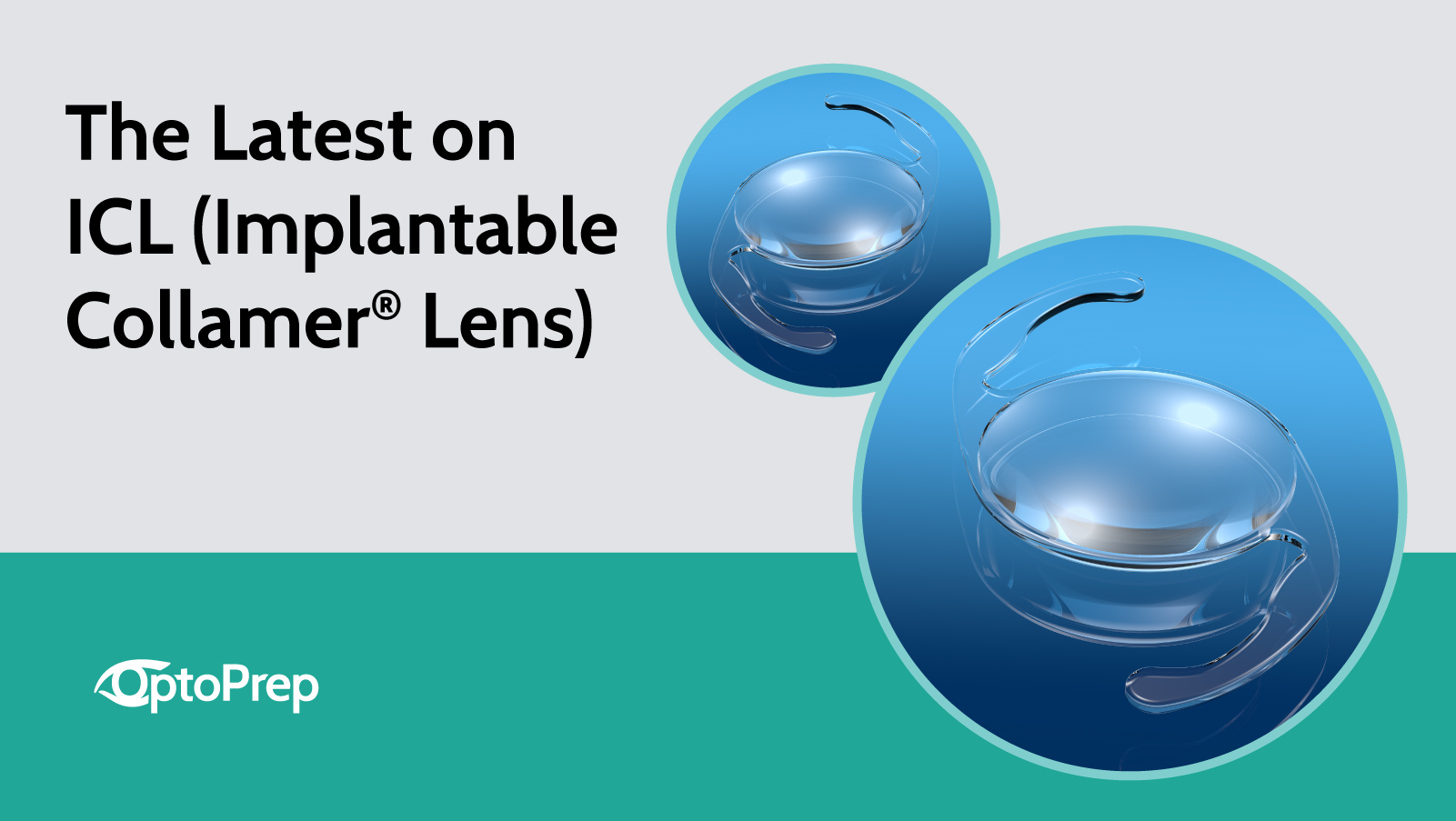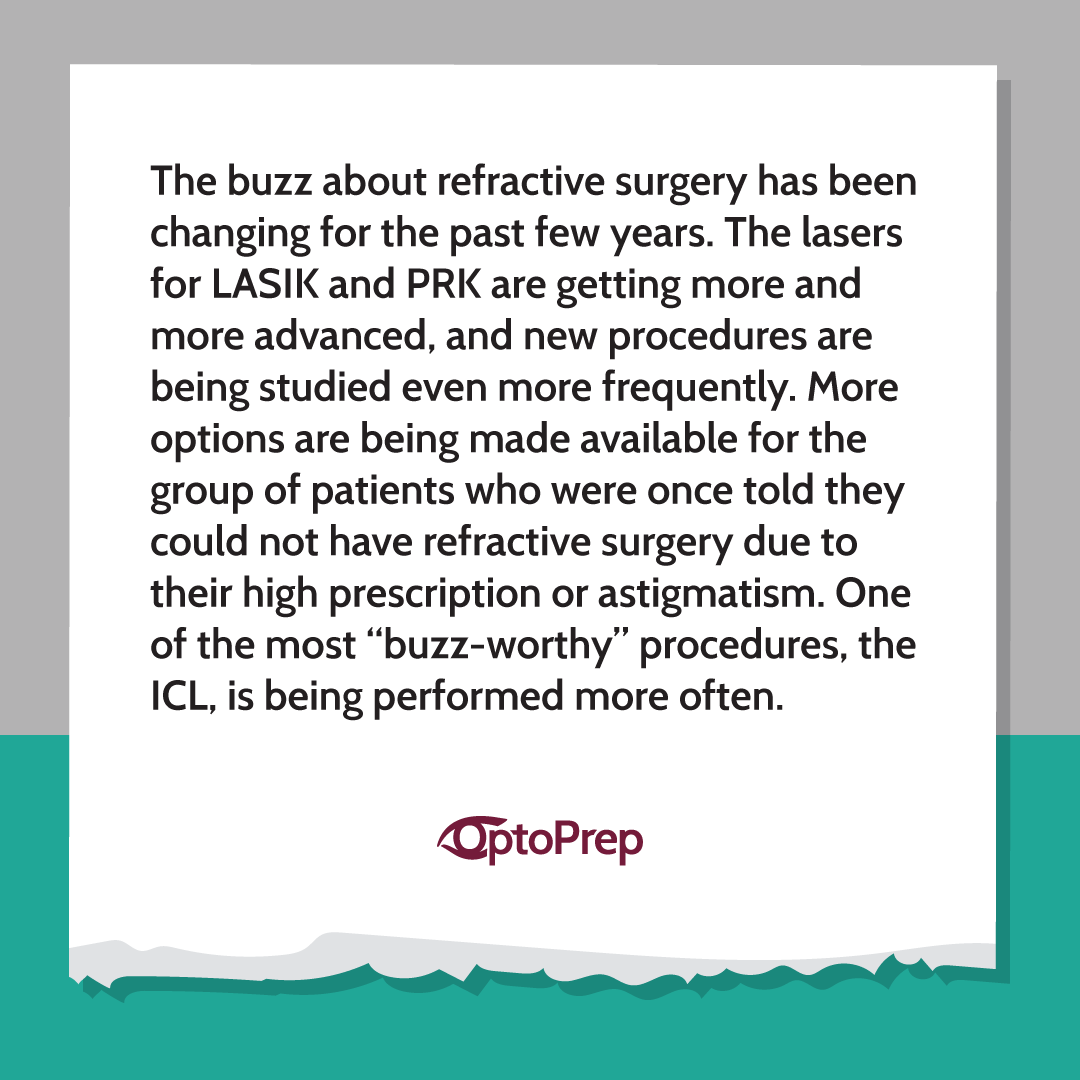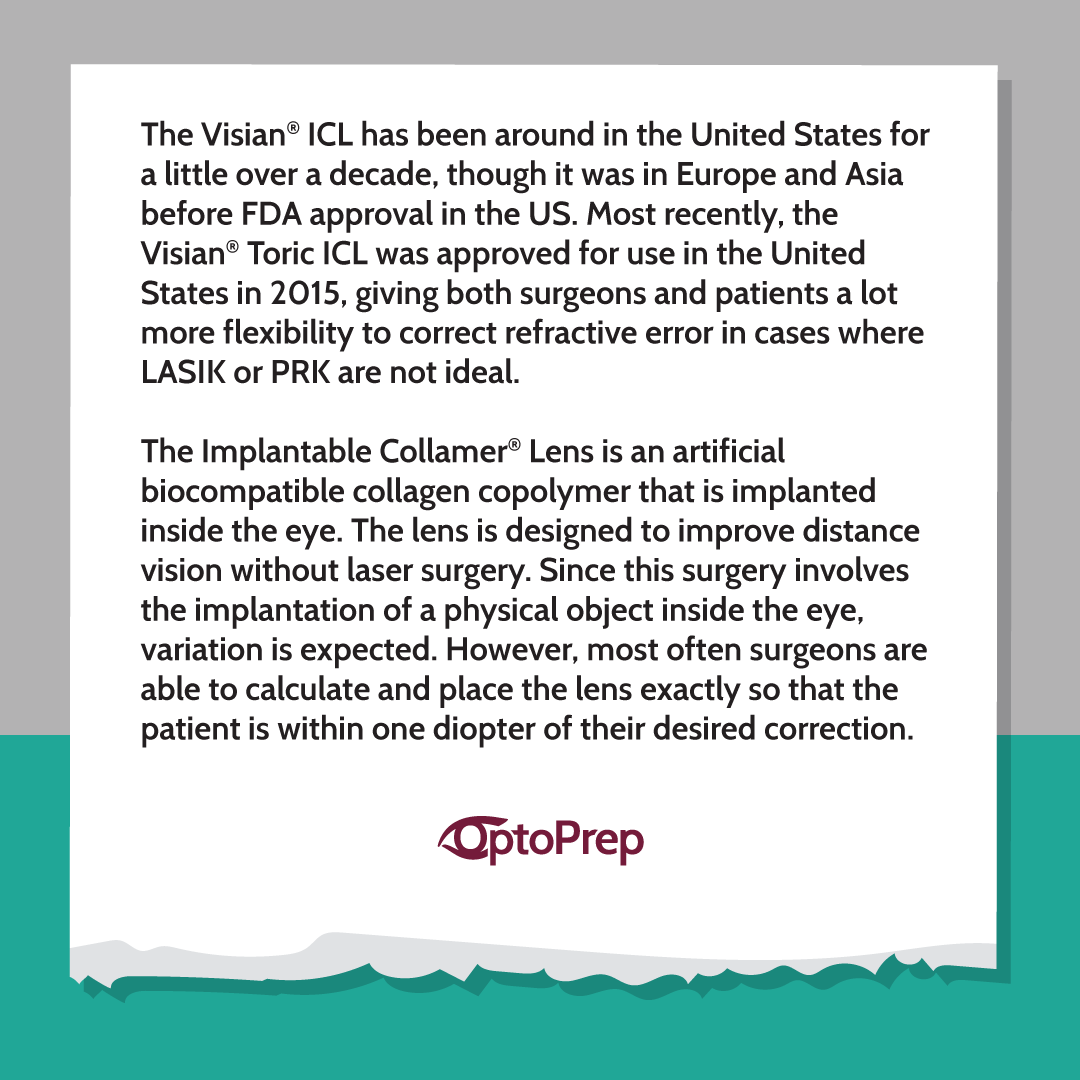
 The buzz about refractive surgery has been changing for the past few years. The lasers for LASIK and PRK are getting more and more advanced, and new procedures are being studied even more frequently. More options are being made available for the group of patients who were once told they could not have refractive surgery due to their high prescription or astigmatism. One of the most “buzz-worthy” procedures, the ICL, is being performed more often. Let’s take a look at the Visian® Implantable Collamer® Lens, otherwise known as the ICL.
The buzz about refractive surgery has been changing for the past few years. The lasers for LASIK and PRK are getting more and more advanced, and new procedures are being studied even more frequently. More options are being made available for the group of patients who were once told they could not have refractive surgery due to their high prescription or astigmatism. One of the most “buzz-worthy” procedures, the ICL, is being performed more often. Let’s take a look at the Visian® Implantable Collamer® Lens, otherwise known as the ICL.
The Visian® ICL has been around in the United States for a little over a decade, though it was in Europe and Asia before FDA approval in the US. Most recently, the Visian® Toric ICL was approved for use in the United States in 2015, giving both surgeons and patients a lot more flexibility to correct refractive error in cases where LASIK or PRK are not ideal.

The Implantable Collamer® Lens is an artificial biocompatible collagen copolymer that is implanted inside the eye. The lens is designed to improve distance vision without laser surgery. Since this surgery involves the implantation of a physical object inside the eye, variation is expected. However, most often surgeons are able to calculate and place the lens exactly so that the patient is within one diopter of their desired correction.
During the procedure, the lens is positioned right behind the iris, and in front of the natural crystalline lens. The power of the ICL depends on the patient's refractive error and the presence of astigmatism. Patient eligibility relies very heavily on the size of the patient’s anterior chamber angle.
So far, the ICL is only FDA approved for myopia, and the toric version is approved for patients who have astigmatism. Given the anatomy of the hyperopic eye, the ICL has not yet been approved for use in hyperopic patients. This is due to the narrow anterior chambers in hyperopic patients making the patient more prone to pupillary block post implantation.
So how do we care for patients post ICL implantation? Post-op procedures are generally pretty simple but very important due to the risk of pupillary block and possible angle closure. During or prior to the surgery, the surgeon usually creates a peripheral iridotomy (PI) in the iris as a prophylactic procedure. This PI helps make sure that intraocular pressure does not spike to high levels following the procedure, though a mild spike in pressure is expected. IOP should always be checked at every Post Operative appointment, including assessment of vision, patient comfort, and lens vaulting. Checking for the lens vault is critical because the lens should not be touching the anterior lens or the posterior iris. The vault is the area between the posterior portion of the artificial lens and the anterior crystalline lens. The ideal lens vault should be between 250 micros and 750 microns. The easiest way to check for vaulting is to compare the size of the vault to the cornea, which is on average 500 microns.

Though the procedure sounds very complicated, explaining the ICL procedure to patients can be quite simple. Since the ICL is a physical object placed inside the eye, make sure to use diagrams or models to show the patient exactly what to expect before they are referred to the surgeon. Though some patients can be hesitant about the procedure at first, patients who have been denied surgery in the past due to high or irregular prescriptions will most often be very happy and intrigued. Remember to remain confident and ask your co-managing surgeon for support materials to present to patients. Telling a patient who has previously been denied refractive surgery that they may be a candidate can turn you into the hero!
~ Dr. Amadian
